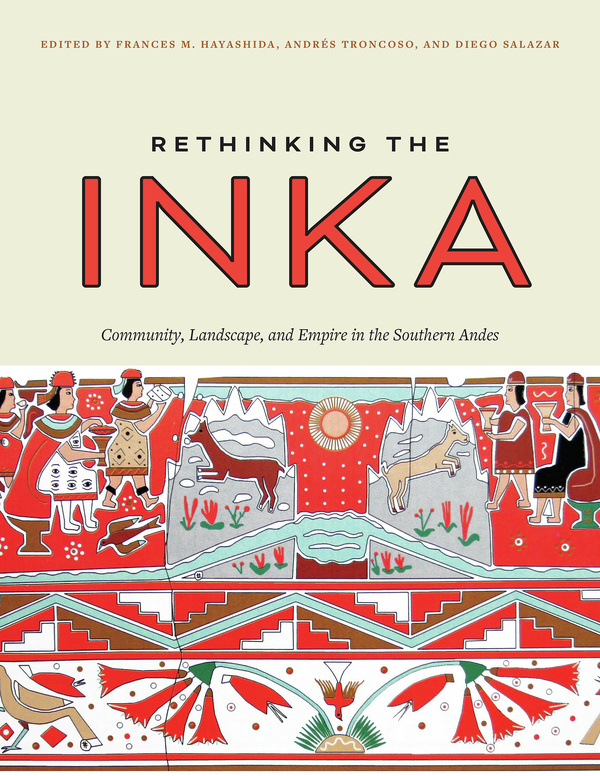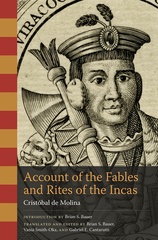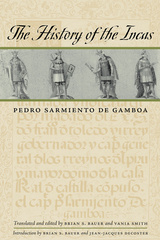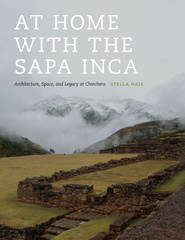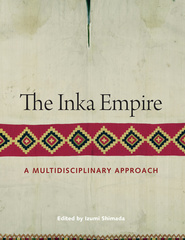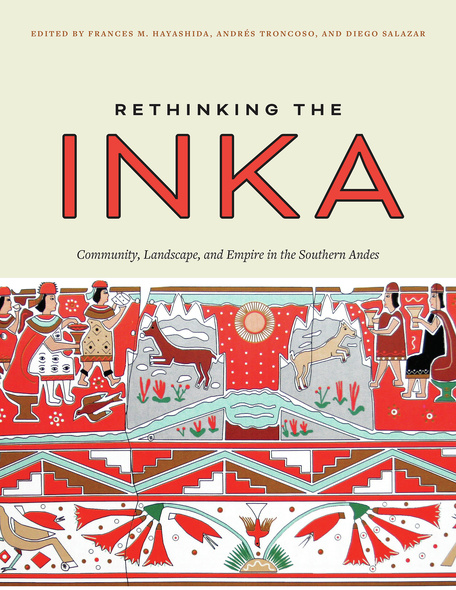
Rethinking the Inka
Community, Landscape, and Empire in the Southern Andes
2023 Book Award, Society for American Archaeology
A dramatic reappraisal of the Inka Empire through the lens of Qullasuyu.
The Inka conquered an immense area extending across five modern nations, yet most English-language publications on the Inka focus on governance in the area of modern Peru. This volume expands the range of scholarship available in English by collecting new and notable research on Qullasuyu, the largest of the four quarters of the empire, which extended south from Cuzco into contemporary Bolivia, Argentina, and Chile.
From the study of Qullasuyu arise fresh theoretical perspectives that both complement and challenge what we think we know about the Inka. While existing scholarship emphasizes the political and economic rationales underlying state action, Rethinking the Inka turns to the conquered themselves and reassesses imperial motivations. The book’s chapters, incorporating more than two hundred photographs, explore relations between powerful local lords and their Inka rulers; the roles of nonhumans in the social and political life of the empire; local landscapes remade under Inka rule; and the appropriation and reinterpretation by locals of Inka objects, infrastructure, practices, and symbols. Written by some of South America’s leading archaeologists, Rethinking the Inka is poised to be a landmark book in the field.
Rethinking the Inka is a fabulous book. Wide-ranging but well focussed, this volume presents...a roll call of the best, established, present-day researchers working on Qullasuyu archaeology; crucially, aside from Frances Hayashida, all the contributors are South American, lending that all-important regional perspective to the articles. Indeed, the editors should be commended on such a diverse and theoretically engaged group.
My summary of this outstanding volume cannot do justice to all the scholars involved. The editors generously committed to presenting original, exceptional investigations conducted on Qullasuyu’s periphery by South American scholars. Rethinking the Inka is an engaging, high-quality collective collection that should be on the shelves of every university library and of researchers interested in the Inca empire and its aftermaths.
Rethinking the Inka Empire brings us new insights into the expansionary motives and methods of the last and largest indigenous state in the Americas as seen from the perspective of the south—the imperial realm known as Qullasuyu—where some of the most exciting research in Inka studies is happening today. In this volume, leading scholars from South America provide a cohesive set of studies that foreground contemporary theoretical concerns with sacred landscapes, material agencies, and social ecologies.
This important and engaging volume brings together recent scholarship regarding the largest sector of the Inca Empire: Qullasuyu, the vast southern suyu of the Empire of the Four Quarters, Tawantinsuyu. Summarizing recent and extensive archaeological and ethnohistorical research, the contributors explore the dynamic interactions between an expanding empire and indigenous elites and communities, as well as the relations between humans and nonhuman agents such as mountain peaks, sacred shrines, and mines. The result is an invaluable contribution to South American prehistory and a stimulating model for thinking about the global archaeology of empires.
In a famous poem on the Inkas, the Chilean poet Pablo Neruda asked, ‘Stone upon stone, but where are the people?’ Rethinking the Inka answers his challenge with richly documented studies of Inka culture and life in the southern quadrant of Qullasuyu, showing the people to be extraordinarily diverse—culturally, materially, and economically—marking a turning point in the archaeology of pre-Columbian America. These studies represent a watershed moment in which archaeologists of the Southern Cone of South America have taken a leadership role in world archaeology.
Frances M. Hayashida is a professor of anthropology at the University of New Mexico and the director of the Latin American and Iberian Institute.
Andrés Troncoso is an associate professor of anthropology at the University of Chile.
Diego Salazar is an associate professor of anthropology at the University of Chile.
List of Tables
A Note on Orthography
Acknowledgments
Chapter 1. Rethinking the Inka: The View from the South (Frances M. Hayashida, Andrés Troncoso, and Diego Salazar)
Chapter 2. Sacred Geography, Wak’as, and Inka Colonialism in the Southern Andes (Félix A. Acuto)
Chapter 3. Metals for the Inka: Mining, Power, and Religion in Qullasuyu (Pablo Cruz)
Chapter 4: Copper Rich, Water Poor: Atacama during Inka Rule (Diego Salazar, José Berenguer R., Victoria Castro, Frances M. Hayashida, César Parcero-Oubiña, and Andrés Troncoso)
Chapter 5. Landscape, Social Memory, and Materiality in the Calchaquí Valley during Inka Domination in Northwest Argentina (Verónica I. Williams)
Chapter 6. Agency and Sociopolitical Dynamics of the Qullasuyu Inka Frontiers (Sonia Alconini)
Chapter 7. Between Subordination and Negotiation for Local Autonomy: Regional Perspectives in the Study of Societies in Los Cintis, Southern Bolivia, under Inka Domination (Claudia Rivera Casanovas)
Chapter 8. The Inka Construction of Space in the South: Sacred Landscapes, Celebrations, and Architectural Orientation at El Shincal de Quimivil (Catamarca, Argentina) (Marco A. Giovannetti)
Chapter 9. Rituals and Interactional Dynamics: Segmented Societies and Tawantinsuyu in Southern Qullasuyu (Daniel Pavlovic, Rodrigo Sánchez, Daniel Pascual, and Andrea Martínez)
Chapter 10. Relational Communities, Leaders, and Social Reproduction: Discussing the Engagement between Tawantinsuyu and Local Communities in the Southern Part of Qullasuyu (Andrés Troncoso)
Chapter 11. Visual Strategies Used in Relations between Tawantinsuyu and the Societies of Qullasuyu: Iconographic Negotiations, Power, and Memory (José Luis Martínez C.)
Chapter 12. The Role of Chullpas in the Inka Conquest of the Southern Altiplano: A Symmetrical Approach (Axel E. Nielsen)
Chapter 13. Perspectives on Understanding Qullasuyu (Ian Farrington)
Contributors
Index

